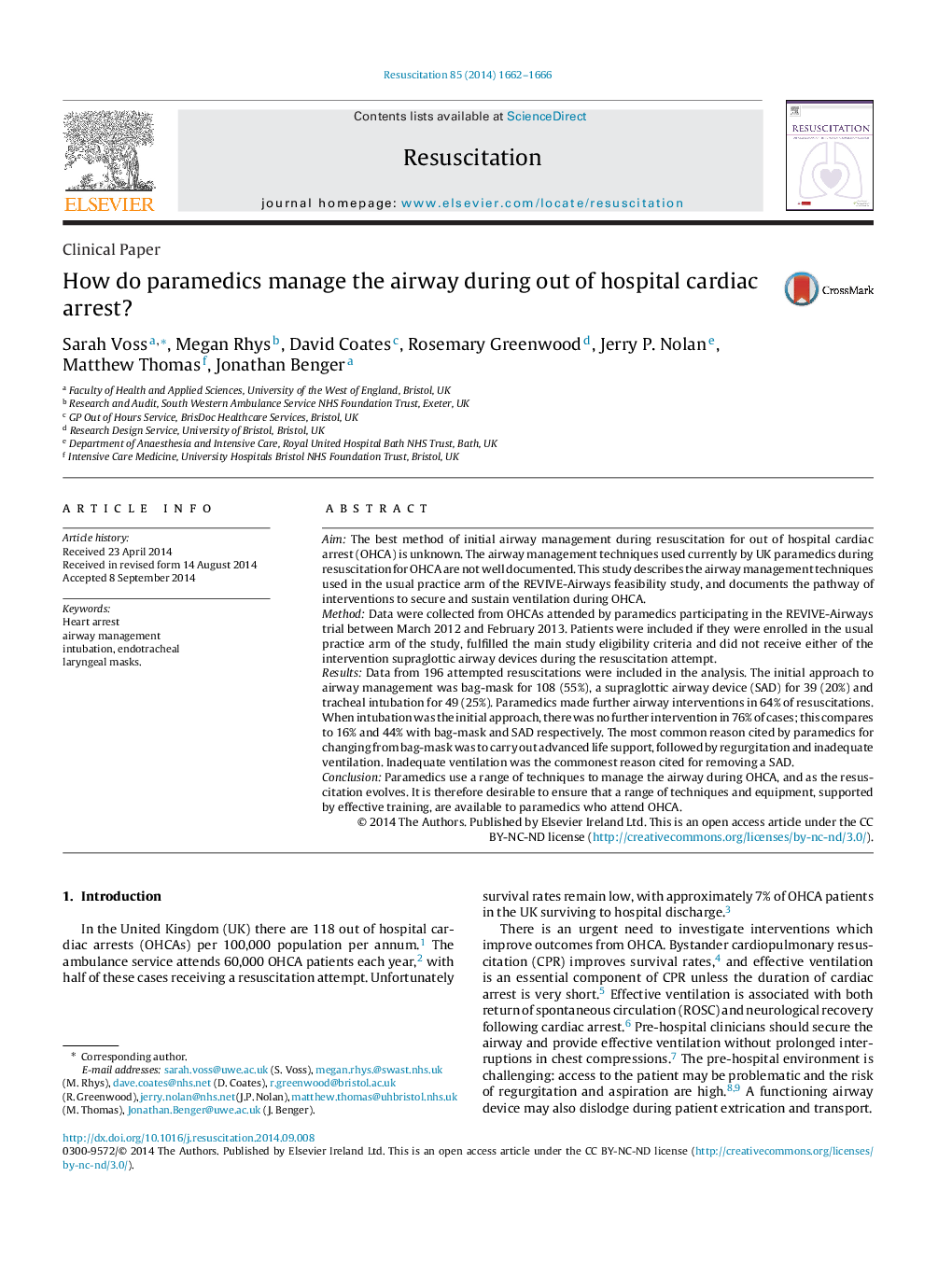| Article ID | Journal | Published Year | Pages | File Type |
|---|---|---|---|---|
| 5997877 | Resuscitation | 2014 | 5 Pages |
AimThe best method of initial airway management during resuscitation for out of hospital cardiac arrest (OHCA) is unknown. The airway management techniques used currently by UK paramedics during resuscitation for OHCA are not well documented. This study describes the airway management techniques used in the usual practice arm of the REVIVE-Airways feasibility study, and documents the pathway of interventions to secure and sustain ventilation during OHCA.MethodData were collected from OHCAs attended by paramedics participating in the REVIVE-Airways trial between March 2012 and February 2013. Patients were included if they were enrolled in the usual practice arm of the study, fulfilled the main study eligibility criteria and did not receive either of the intervention supraglottic airway devices during the resuscitation attempt.ResultsData from 196 attempted resuscitations were included in the analysis. The initial approach to airway management was bag-mask for 108 (55%), a supraglottic airway device (SAD) for 39 (20%) and tracheal intubation for 49 (25%). Paramedics made further airway interventions in 64% of resuscitations. When intubation was the initial approach, there was no further intervention in 76% of cases; this compares to 16% and 44% with bag-mask and SAD respectively. The most common reason cited by paramedics for changing from bag-mask was to carry out advanced life support, followed by regurgitation and inadequate ventilation. Inadequate ventilation was the commonest reason cited for removing a SAD.ConclusionParamedics use a range of techniques to manage the airway during OHCA, and as the resuscitation evolves. It is therefore desirable to ensure that a range of techniques and equipment, supported by effective training, are available to paramedics who attend OHCA.
